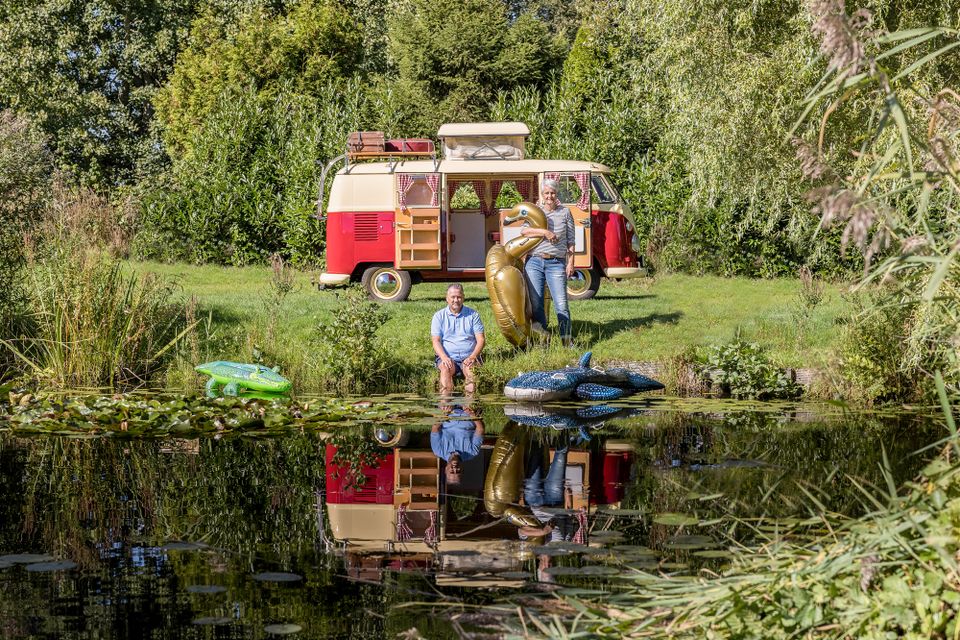All activities in Northeast Friesland
673 to 696 of 850 results
-
It Lytse Slot Manor
It Lytse Slot Manor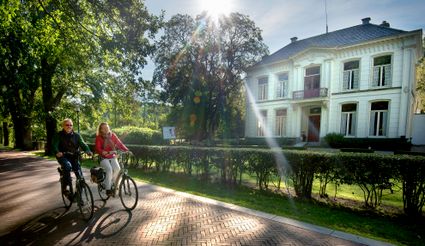 Veenklooster
Veenklooster -
Michaëlkerk Anjum
Michaëlkerk Anjum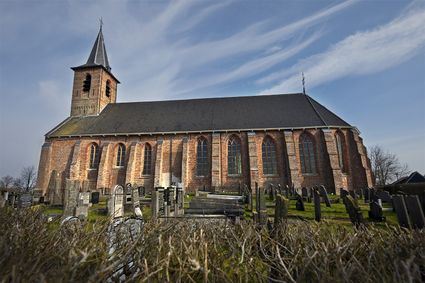 Anjum
Anjum -
Kollumer Museum Mr Andreae
Kollumer Museum Mr Andreae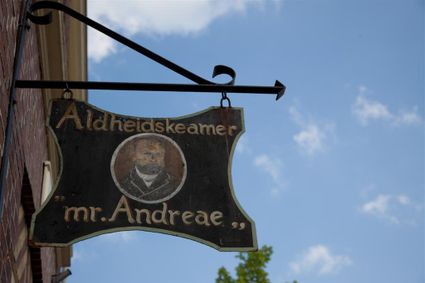 Kollum
Kollum -
Mariakerk Bornwird
Mariakerk Bornwird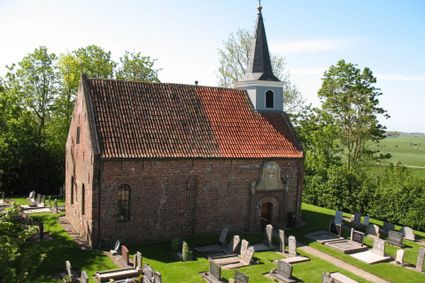 Bornwird
Bornwird -
Lancaster Expositie Geraakt
Lancaster Expositie Geraakt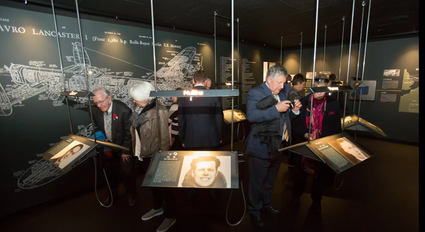 Eernewoude
Eernewoude -
Timertsmar
Timertsmar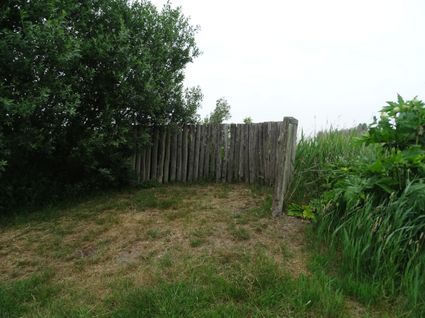 Grou
Grou -
Bartlehiem (Bartlehiem)
Bartlehiem (Bartlehiem)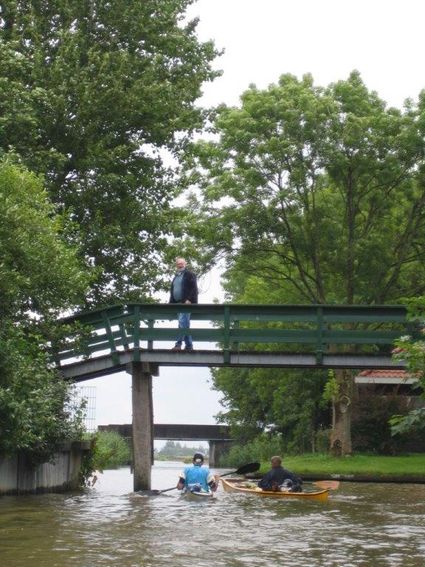 Bartlehiem
Bartlehiem -
De sluis van Ouwe Syl


Accept cookies to see this content.
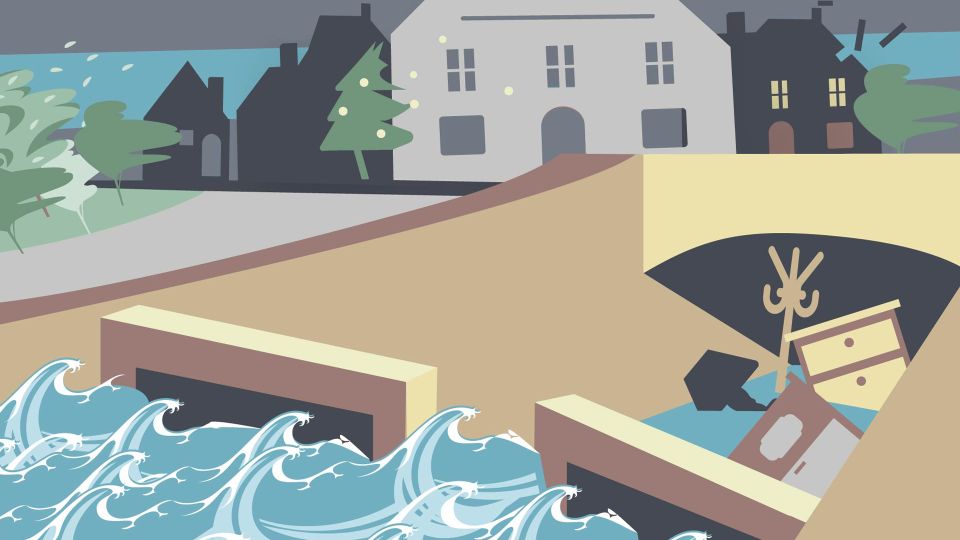

De sluis van Ouwe Syl
(beluister hier het audioverhaal)
Waar anders dan hier spreek je af met dorpsgenoten? Op de 'pyp' natuurlijk: de brug over de zijl, de sluis. De sluis is het natuurlijke middelpunt van Oudebildtzijl. Het dorp dankt zijn ontstaan én naam aan de sluis. In het Bildtse dialect dat hier gesproken wordt: Ouwe Syl.
De sluis – van hout - wordt in 1507 in de pas aangelegde vijftien kilometer lange dijk getimmerd en is onderdeel van een grootschalige inpoldering. 'Skep foor skep' veroveren arbeiders hier land op zee, de vroegere monding van de Middelzee om precies te zijn. De sluis, op de plek waar de Oude Rij in zee stroomt, zorgt voor afwatering van de vruchtbare polder. Schepen kunnen via de schutsluis naar de Waddenzee en terug landinwaarts. Aanleggen kan bij de kolk, een klein haventje achter het café.
Een eeuw later, rond 1600 is alweer land aangeslibd en komt er een nieuwe afwateringssluis twee kilometer noordwaarts: de Nije Syl (de nieuwe zijl, sluis), waar ook een gehucht ontstaat. Het dorp met de oude sluis verandert dan van Bildtsyl naar Ouwe-Syl.
Toch is de sluis van het oude Bildt nog steeds onderdeel van de waterkering. De dijk functioneert namelijk nog als slaperdijk, een reservedijk dus. De eikenhouten deuren die je in de sluis ziet hangen kúnnen het water tegenhouden. Ze zijn in 2006 geplaatst omdat de oorspronkelijke deuren waren verdwenen. Tot die tijd lagen er tientallen balken achter het café, die in geval van nood in de sluis geschoven konden worden.
De Sylsters zullen tegenwoordig niet wakker liggen van hoog water. Een paar eeuwen geleden was dat wel anders. Als er tijdens Kerst 1717 een stormvloed over de kust raast bijvoorbeeld. Het zoute zeewater dreigt de polders in te stromen en de sluis begeeft het bijna. De heldhaftige timmerman Krelis Anne laat de Sylsters als de wiedeweerga een huis afbreken en het puin in de sluis storten. Het dorp is gered, net als het achterland. Iemand die goed bevelen uit kan delen staat hier op 'e Syl nog altijd bekend als iemand die 'ken kommendere als Baas Krelis.'
Ingesproken door:
Als architect leeft Alex van de Beld tussen twee werelden; de wereld van het landschap en de natuur, met daarnaast de wereld van de kunst en de cultuur. Alex werkt al zijn hele leven om die werelden te verbinden. Dat is volgens hem nu meer dan ooit nodig, willen we een nieuwe toekomst ontwerpen.Alex leerde Joop Mulder in de aanloop naar 2018 kennen. “Joop was iemand die verschillende culturen bij elkaar bracht, zoals een sluis water met elkaar verbindt. Dat is meer en meer nodig om een inspirerende leefomgeving te maken waarin iedereen zijn plek vindt. Daarom zullen we Joop Mulder missen. Maar we gaan met zijn mentaliteit, creativiteit en zijn sense of place aan de slag voor het landschap van de toekomst.”
Dit verhaal is onderdeel van de route Gemalen Verhalen van Sense of Place
 Oude Bildtzijl
Oude Bildtzijl -
Kerk Lioessens
Kerk Lioessens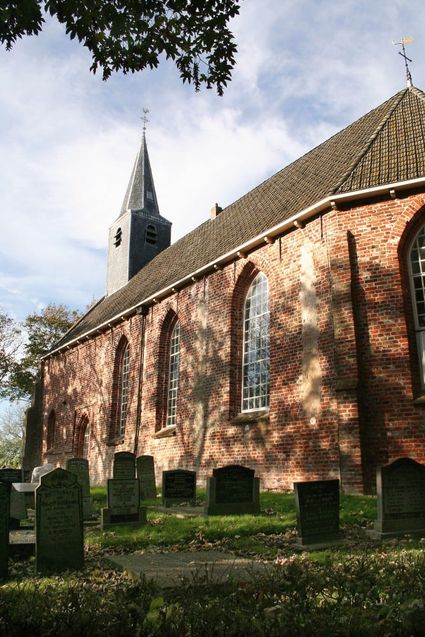 Lioessens
Lioessens -
Bij de hoge houten trap over de zeedijk
Bij de hoge houten trap over de zeedijk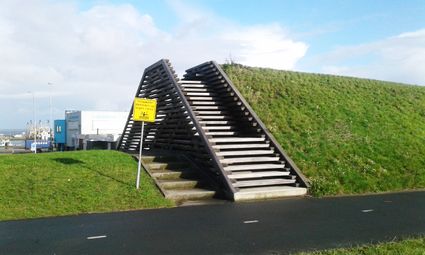 Lauwersoog
Lauwersoog -
Sint-Ceciliakerk Oosternijkerk
Sint-Ceciliakerk Oosternijkerk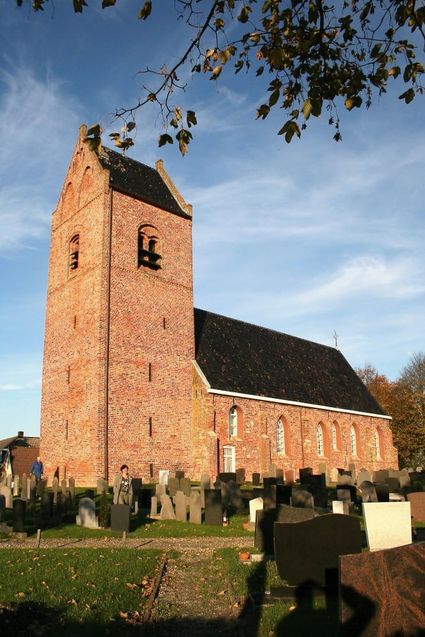 Oosternijkerk
Oosternijkerk -
Camping de Kleine Wielen
Camping de Kleine Wielen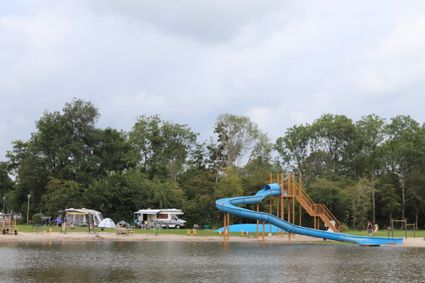 Leeuwarden
Leeuwarden -
Burgum Bergummerdaam | Laadpalen aan het water
Burgum Bergummerdaam | Laadpalen aan het water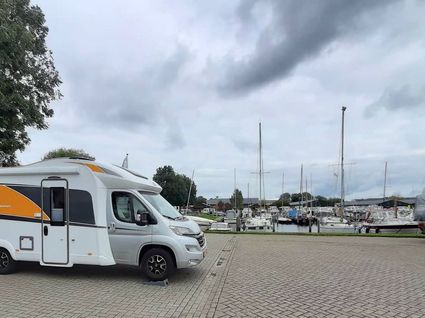 Burgum
Burgum -
Attack on the port of Oostmahorn
Attack on the port of Oostmahorn
The liberation of the north-eastern part of Friesland was not achieved without a struggle. The Dutch Domestic Armed Forces (NBS) and Canadian troops fought fierce battles, partly side by side. It was mainly occupiers fleeing in panic who caused fights and shootings that claimed victims on both sides. A fierce battle was also fought over the port of Oostmahorn.
After the liberation of Dokkum, Kollum and Dokkumer Nieuwe Zijlen, the attention of the Canadian troops turned to the port of Oostmahorn. It was the gateway to the island of Schiermonnikoog, which was part of the German defence line, the Atlantic Wall. This bulwark ran along the coasts of France to Norway. During the war, and extensive occupying force was stationed on the Wadden Island.
The village of Oostmahorn was "relieved" by the Dutch Domestic Armed Forces (NBS) on Saturday, 14 April, after the German Grenzschutz (border control) left in silence for Schiermonnikoog. Meanwhile, a group of more than a hundred fleeing SS and SD men and a dozen women crossed the Lauwerszee from Groningen near Zoutkamp with three boats to the island. A number of them were high-ranking SD members of the infamous Scholtenhuis in Groningen. When the NBS saw them sailing past from the port of Oostmahorn, shots were fired back and forth.
The German occupying forces on Schiermonnikoog then wanted to take revenge. The village and the port of Oostmahorn were attacked from the island for two hours on Monday, 16 April. A convoy of three Dutch boats left for the port with the aim of landing there. Meanwhile, the help of the B-Squadron of the Royal Canadian Dragoons (1st Armoured Carrier Regiment) in Dokkum had been called in. The attack was narrowly repelled, but two Canadian soldiers from a reconnaissance group were killed. A defence line of foxholes and armoured vehicles was erected around the village.
Further reinforcements were called in that day from Leeuwarden, where C Company of the North Nova Scotia Highlanders were sent to the coastal strip to patrol for German landing attempts.
After a brief but heavy shelling from the Canadians as a warning, a mediator was sent to the island the next day. The highest-ranking SD officer refused to surrender. They were waiting for an escape with a Schnell boat that was to take them to the German Wadden island of Borkum on 3 May. That turned out to be in vain, but in the meantime they kept the island occupied, even after the general capitulation of the whole of the Netherlands on 5 May.It was not until 11 June that two boats, the MS Waddenzee and the MS Brakzand, transported the last occupiers of Schiermonnikoog to the port of Oostmahorn. A column of army trucks packed with prisoners of war left the port under the guard of the Allies. From there they went to the POW camp in Beerta (Groningen).
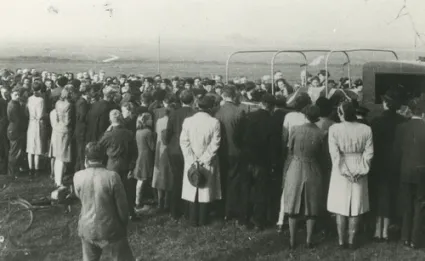 Eanjum
Eanjum -
Sint-Vituskerk Wyns
Sint-Vituskerk Wyns Wyns
Wyns -
Heidegebied Sumar
Heidegebied Sumar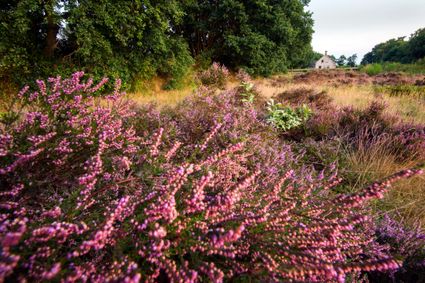 Sumar
Sumar -
Filmhuis Kollum
Filmhuis Kollum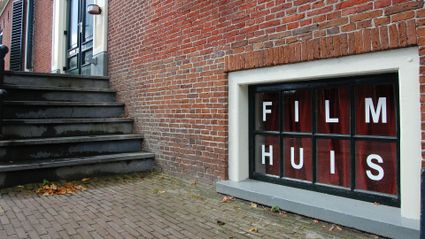 Kollum
Kollum -
Outdoor Veldboom
Outdoor Veldboom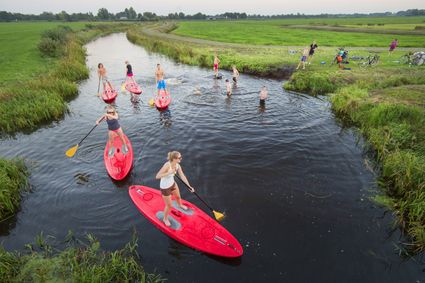 Eernewoude
Eernewoude -
Veerpont Hin en Wer (It Wiid)
Veerpont Hin en Wer (It Wiid) Eernewoude
Eernewoude -
Waddenhuisverhuur Gastenverblijf WolThús
Waddenhuisverhuur Gastenverblijf WolThús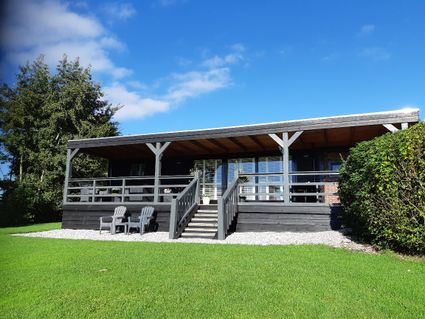 Paesens
Paesens -
Kerk Augsbuurt
Kerk Augsbuurt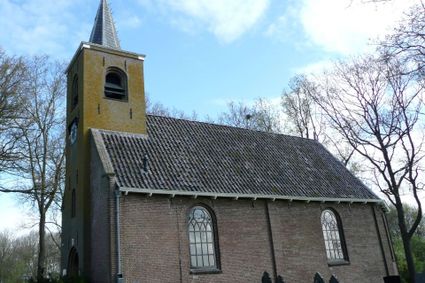 Augsbuurt
Augsbuurt -
Logement Doosje
Logement Doosje Warfstermolen
Warfstermolen -
Soestpolder Nature Reserve
Soestpolder Nature Reserve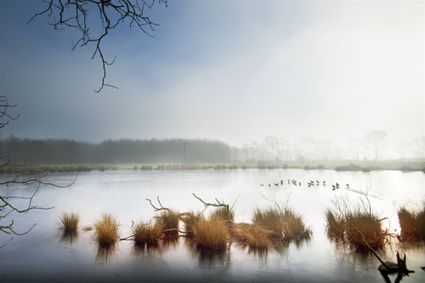 Burgum
Burgum -
Aardappelhandel De Jong
Aardappelhandel De Jong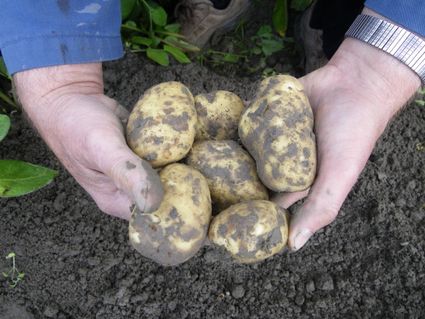 Ternaard
Ternaard
